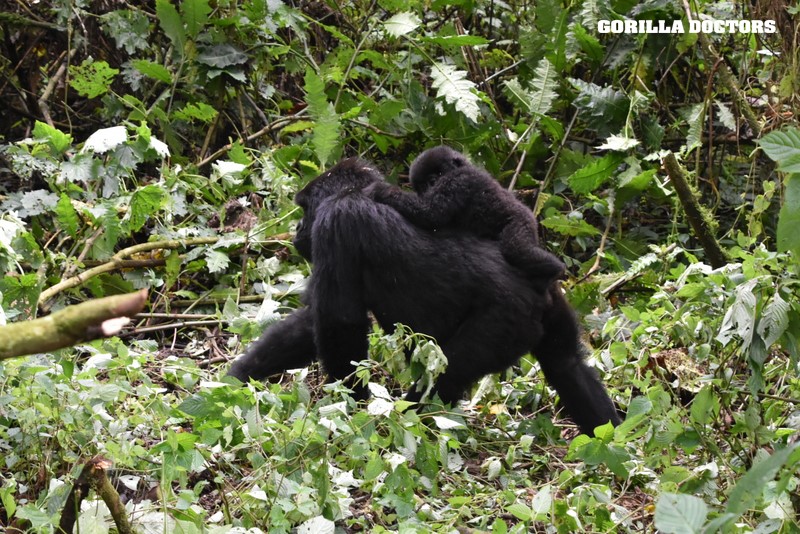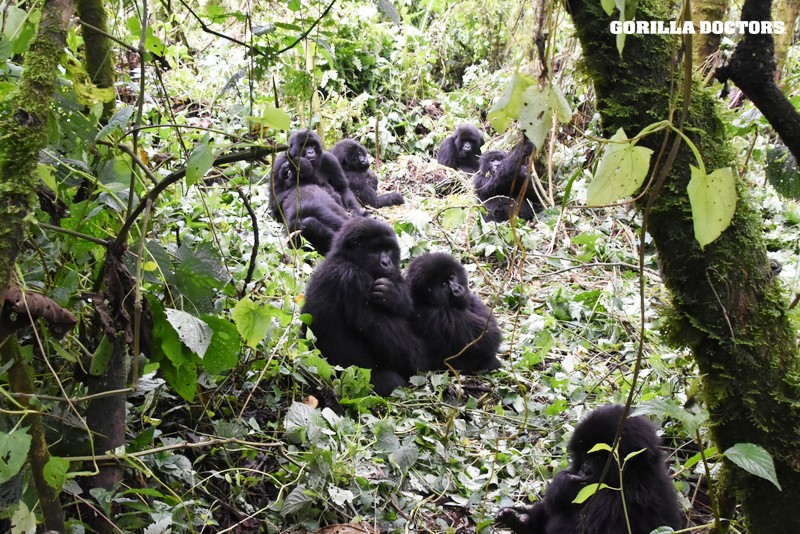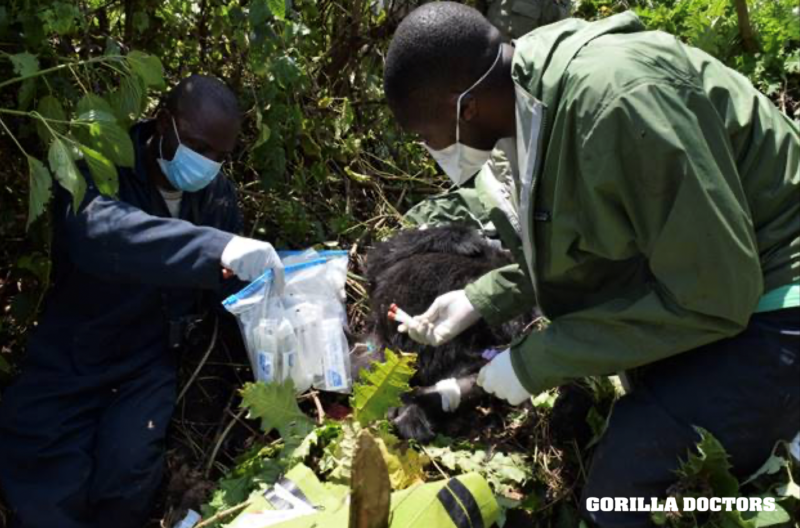Meet the Largest Mountain Gorilla Group in Virunga National Park
By Gorilla Doctors Staff on Wednesday, February 19th, 2020 in Blog.On February 7th, Drs. Eddy and Martin conducted a routine health check of Wilungula group, a newly habituated mountain gorilla group in Virunga National Park, DR Congo. At this moment, Wiliungula is the largest in the region with 40 individuals, including four silverbacks! Here is Wilungula group’s story…
Field Report: Routine Health Check
Location: Virunga National Park, DR Congo (DRC)
Gorilla Group: Wilungula, 40 individuals (newly habituated)
Gorilla Doctors: Eddy Kambale Syaluha and Martin Kabuyaya
Date: February 7, 2020
Wilungula group is one of two groups in Virunga National Park undergoing a two-year process of being habituated to the presence of humans in order to support their protection and eco-tourism. Habituation of this group first began in March 2018, and the first tourists visited the group less than one-year later, in February 2019.
“We couldn’t imagine this group had just under two-years of habituation because the gorillas were so relaxed,” noted Dr. Martin in their field report.
When Drs. Eddy and Martin first arrived at the group’s location on the morning of the 7th, they found few night nests, and realized then that most of the mountain gorillas had spent the night up in the trees. During their observations, they counted 25 individuals circled around the lead silverback. There were nine individuals with the second silverback, and moving slightly ahead of the group were two more silverbacks with an adult female.
The mountain gorillas were resting and feeding, and the younger juveniles and infants were playing during their one-hour visit. Drs. Eddy and Martin observed a total of 37 gorillas during their health check, and all gorillas were physically healthy.

Adult female with infant moving along at the end of rest time. Photo by Dr. Martin. © Gorilla Doctors
Gorilla Doctors First Intervention in Wilungula Group
Gorilla Doctors Eddy and Martin performed their first intervention in Wilungula group on September 20, 2018 to remove a rope snare from a juvenile’s left leg. And when Drs. Eddy and Martin conducted their routine health check on February 7th, they found this same individual thriving as a healthy sub-adult!
A Note from our Executive Director
We wanted to share this short report on our routine health check of the newly-habituated Wilungula group because we often receive questions about the health impact of tourism on mountain gorillas. Mountain gorillas are susceptible to human diseases (and vice versa) so anytime humans and gorillas come into close proximity of one another, there is an increased risk of disease transmission. With mountain gorillas living in isolated forests, surrounded by some of the most densely human-populated regions in Africa, and with thousands of tourists from all over the world visiting each year, the risk of disease ‘spillover’ is high.
In fact, one of the most common health issues we treat in mountain gorillas is respiratory illness, which may sometimes be caused by human viruses. In DR Congo, tourists visiting gorillas are required to wear masks to reduce the risk of transmission, and in both Rwanda and Uganda, tourists are instructed to keep a minimum distance of 21 feet, also to help reduce the risk of disease transmission to gorillas. Fortunately, when respiratory illness does occur in gorillas, our veterinarians are usually able to provide treatment with a dose of long-acting antibiotics via dart.
Despite these risks, there is no question that eco-tourism has played a profound role in helping rescue mountain gorillas from the brink of extinction. Multiple stakeholders, in partnership with wildlife authorities, focus on research, anti-poaching and community development. Gorilla Doctors’ work focuses on the intersection of gorilla and human health through our One Health approach. In addition, revenue from tourism fees are being invested in local communities to build schools and health clinics, and develop advanced infrastructure.
Gorilla Doctors’ health training and programs for park staff (guides, rangers, trackers) – those most often in close proximity to mountain gorillas – also helps mitigate the risks of disease being passed from people to gorillas. In partnership with park authorities, Gorilla Doctors has installed hand-washing stations, created educational videos and conducted workshops on health and hygiene. Gorilla Doctors’ Employee Health Program (EHP) has provided annual check-ups and preventive medicine not only for its veterinarians, but also to many hundreds of park staff (and their families) in Rwanda and DR Congo.
All of these initiatives work to mitigate the risk of disease transmission in gorillas (and people) while also increasing the health of people (and livestock) living around the parks to the benefit of all.


 Donate
Donate


